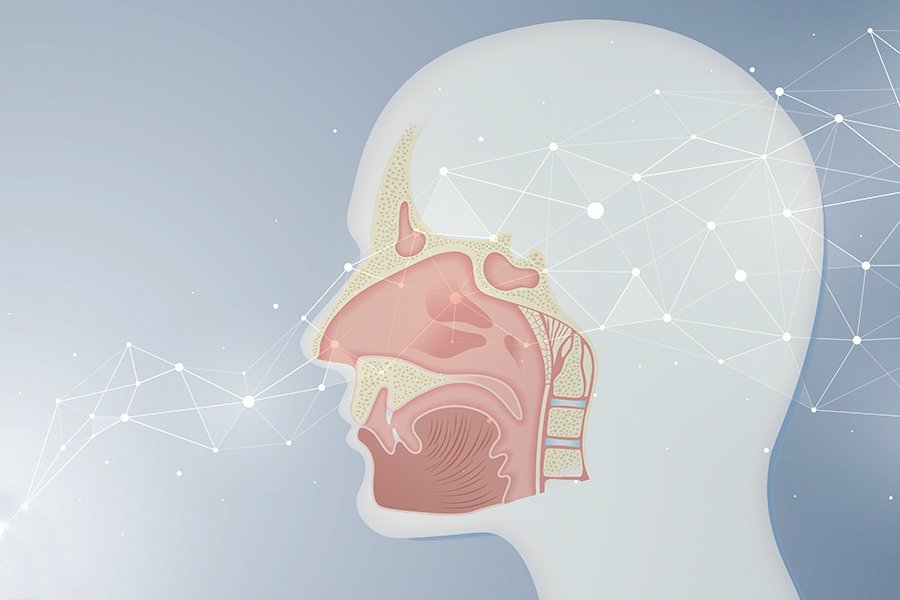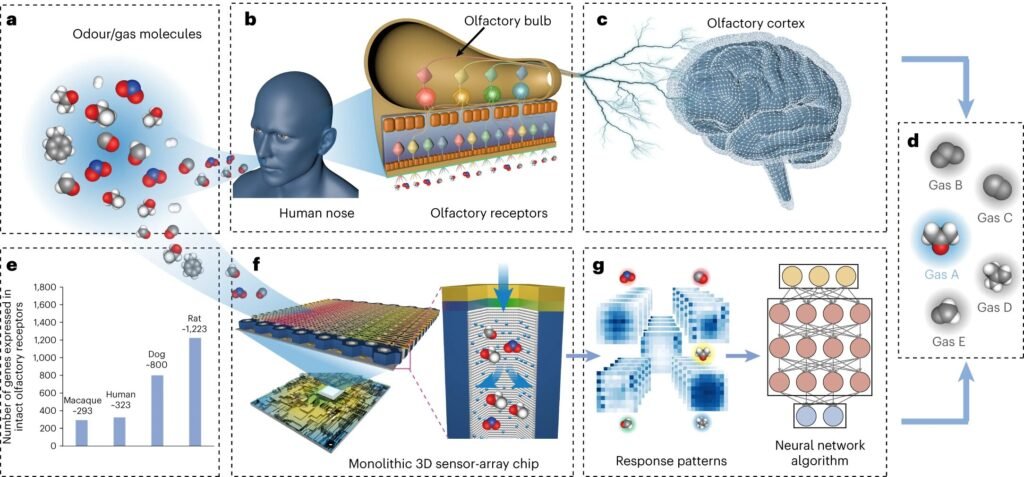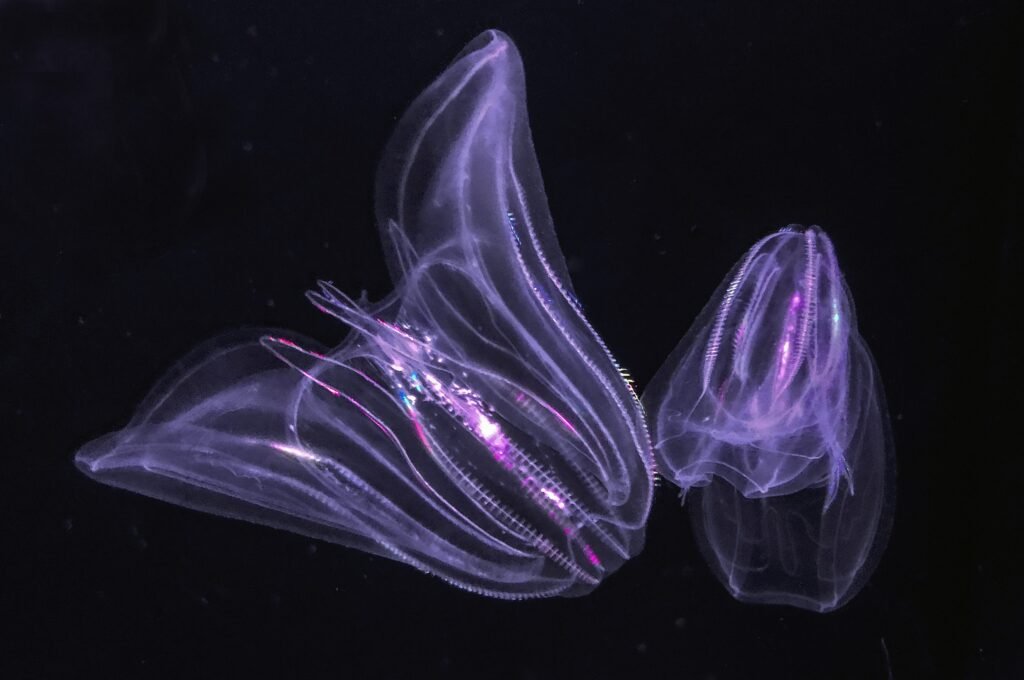AI Biomimetic Olfactory Chips enable robots to smell like humans
Scientists have long struggled to develop artificial intelligence (AI) Biomimetic Olfactory Chips (BOC) worldwide. AI biomimetic olfactory Chips refer to electronic noses, which make it possible to smell like humans and animals.
Developing electronic noses (e-noses) that can effectively distinguish complex ordant mixes similar to the biological olfactory system, has proven difficult due to tiny size and identification challenges.

However, a research team from the Hong Kong University of Science and Technology (HKUST) has made a big breakthrough in this sector with their recently developed biomimetic olfactory chips (BOC). Prof. FAN Zhiyong from HKUST has led this BOC project.
BOCs are a ground-breaking invention in the realm of Artificial scent sensing. These tiny chips mimic how humans and animals perceive orders. It makes them more precise and efficient than earlier artificial olfaction systems.
Each BOC comprises up to 10,000 small gas sensors arranged in a pattern similar to a biological olfactory system. This unusual design enables the chip to detect and distinguish between several scents. The chips may sense sents even when they are mixed in complex combinations.

Click here to read updates on Scientists who made AI stickers to help people with speaking issues
One of the distinguishing features of BOC is the use of unique material composition that varies throughout the chip. This allows the integration of several sensors on a single chip, allowing it to detect various scents while remaining small and compact.
The gas sensors used in BOC are sensitive, detecting even tiny amounts of different gases and volatile organic compounds (VOCs). These sensors are developed on a substrate with microscopic holes, giving the gases a huge surface area to interact. It increases the sensitivity of the chip and response time.
The BOC can process and interpret data from gas sensors allowing it to identify and differentiate between distinct scents with high accuracy by combining advanced sensor technology with AI algorithms.
Read More:
- Sea creature turns into a baby when it is stressed out showing time travel
- Realme Narzo 70 Turbo 5G launch date, features, specifications & price
- European Space Agency printed 3D metal part in space for first time
- Earth’s mysterious Alaska triangle where over 20,000 people disappeared
- Philips Hue launched a new smart lighting solution for kitchen
- NASA to launch life-searching spacecraft to Jupiter’s moon Europa
Share this content:










Post Comment